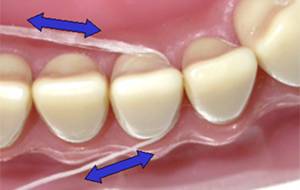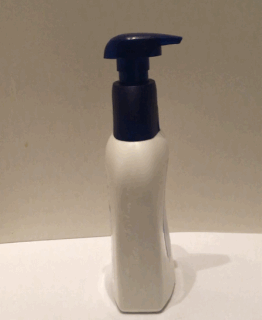
Toilet paper is a tissue paper product primarily used to clean the anus and surrounding anal region of feces after defecation, and to clean the perineal area and external genitalia of urine after urination or other bodily fluid releases. It also acts as a layer of protection for the hands during these processes. It is usually supplied as a long strip of perforated paper wrapped around a paperboard core for storage in a dispenser near a toilet. The bundle is known as a toilet roll, or loo roll or bog roll in Britain.

A diaper /ˈdaɪpə(r)/ or a nappy is a type of underwear that allows the wearer to urinate or defecate without using a toilet, by absorbing or containing waste products to prevent soiling of outer clothing or the external environment. When diapers become wet or soiled, they require changing, generally by a second person such as a parent or caregiver. Failure to change a diaper on a sufficiently regular basis can result in skin problems around the area covered by the diaper.

A flush toilet is a toilet that disposes of human waste by using the force of water to flush it through a drainpipe to another location for treatment, either nearby or at a communal facility, thus maintaining a separation between humans and their waste. Flush toilets can be designed for sitting or for squatting, in the case of squat toilets. Most modern sewage treatment systems are also designed to process specially designed toilet paper. The opposite of a flush toilet is a dry toilet, which uses no water for flushing.

A toilet seat is a hinged unit consisting of a round or oval open seat, and usually a lid, which is bolted onto the bowl of a toilet used in a sitting position. The seat can be either for a flush toilet or a dry toilet. A toilet seat consists of the seat itself, which may be contoured for the user to sit on, and the lid, which covers the toilet when it is not in use – the lid may be absent in some cases, particularly in public restrooms.

A razor is a bladed tool primarily used in the removal of body hair through the act of shaving. Kinds of razors include straight razors, safety razors, disposable razors, and electric razors.

Dental floss is a cord of thin filaments used in interdental cleaning to remove food and dental plaque from between teeth, places a toothbrush has difficulty reaching, or is unable to reach. Its regular use as part of oral cleaning is designed to maintain oral health.

A safety razor is a shaving implement with a protective device positioned between the edge of the blade and the skin. The initial purpose of these protective devices was to reduce the level of skill needed for injury-free shaving, thereby reducing the reliance on professional barbers.

A paper towel is an absorbent, disposable towel made from paper. In Britain, paper towels for kitchen use are also known as kitchen rolls, kitchen paper, or kitchen towels. For home use, paper towels are usually sold in a roll of perforated sheets, but some are sold in stacks of pre-cut and pre-folded layers for use in paper-towel dispensers. Unlike cloth towels, paper towels are disposable and intended to be used only once. Paper towels soak up water because they are loosely woven, which enables water to travel between the fibers, even against gravity. They have similar purposes to conventional towels, such as drying hands, wiping windows and other surfaces, dusting, and cleaning up spills. Paper towel dispensers are commonly used in toilet facilities shared by many people, as they are often considered more hygienic than hot-air hand dryers or shared cloth towels.

A toilet-roll holder, also known as a toilet paper dispenser, is an item that holds a roll of toilet paper. Common models include a hinged length of wire mounted horizontally on a wall, a thicker axle either recessed into a wall or mounted on a frame, or a freestanding vertical pole on a base. In recent years, automatic toilet paper dispensers which automatically fold and cut the toilet paper are being installed in public toilets.

A chemical toilet collects human excreta in a holding tank and uses chemicals to minimize odors. They do not require a connection to a water supply and are used in a variety of situations. These toilets are usually, but not always, self-contained and movable. A chemical toilet is structured around a relatively small tank, which needs to be emptied frequently. It is not connected to a hole in the ground, nor to a septic tank, nor is it plumbed into a municipal system leading to a sewage treatment plant. When the tank is emptied, the contents are usually pumped into a sanitary sewer or directly to a treatment plant.

Facial tissue and paper handkerchief refers to a class of soft, absorbent, disposable papers that are suitable for use on the face. They are disposable alternatives for cloth handkerchiefs. The terms are commonly used to refer to the type of paper tissue, usually sold in boxes, that is designed to facilitate the expulsion of nasal mucus from the nose (nose-blowing) although it may refer to other types of facial tissues such as napkins and wipes.

A soap dispenser is a device that, when manipulated or triggered appropriately, dispenses soap. It can be manually operated by means of a handle, or can be automatic. Soap dispensers are often found in public toilets.

A toilet brush is a tool for cleaning a toilet bowl. The modern plastic version was invented in 1932 by William C. Schopp of Huntington Park, California, US and later patented in 1933 by the Addis Brush Company.
A female urination device, female urination aid, or stand-to-pee device (STP) is a device which aids a female or a trans man to urinate while standing upright. Variations range from basic disposable funnels to more elaborate reusable designs. Female urination devices have increased in popularity since the 1990s. They are used for outdoor pursuits, and for medical reasons.

An aircraft lavatory or plane toilet is a small room on an aircraft with a toilet and sink. They are commonplace on passenger flights except some short-haul flights. Aircraft toilets were historically chemical toilets, but many now use a vacuum flush system instead.

A timeline of United States inventions (1890–1945) encompasses the ingenuity and innovative advancements of the United States within a historical context, dating from the Progressive Era to the end of World War II, which have been achieved by inventors who are either native-born or naturalized citizens of the United States. Copyright protection secures a person's right to his or her first-to-invent claim of the original invention in question, highlighted in Article I, Section 8, Clause 8 of the United States Constitution which gives the following enumerated power to the United States Congress:
To promote the Progress of Science and useful Arts, by securing for limited Times to Authors and Inventors the exclusive Right to their respective Writings and Discoveries.

A dry toilet is a toilet that operates without flush water, unlike a flush toilet. The dry toilet may have a raised pedestal on which the user can sit, or a squat pan over which the user squats in the case of a squat toilet. In both cases, the excreta falls through a drop hole. The urine and feces can either become mixed at the point of dropping or stay separated, which is called urine diversion. Dry toilets do not produce sewage. Many types of toilets without a water seal exist. These types of toilets do not use water as an odor seal or to move excreta along. For example, from simple to more complex: a bucket toilet, a tree bog or arborloo, a pit latrine, a vault toilet, a container-based toilet, a composting toilet, a urine-diverting dry toilet, and incinerating and freezing toilets.

An automatic soap dispenser is a device that dispenses a controlled amount of soap solution. They are often used in conjunction with automatic faucets in public restrooms. They function to conserve the amount of soap used and stem infectious disease transmission.

An automatic toilet paper dispenser is a toilet roll holder that can be either button or sensor-activated to fold and cut the toilet paper automatically.

A devious lick, also known as a diabolical lick, dastardly lick, or nefarious lick, amongst other names, is a viral 2021 TikTok challenge in which one or more American primary or secondary school students post a video of themselves stealing, vandalizing, or showing off one or more items they stole primarily from their school, typically from a bathroom. The trend has resulted in the arrests of many students across the United States. It also allegedly spread to some schools in Canada, Latin America, England, and Australia.




















